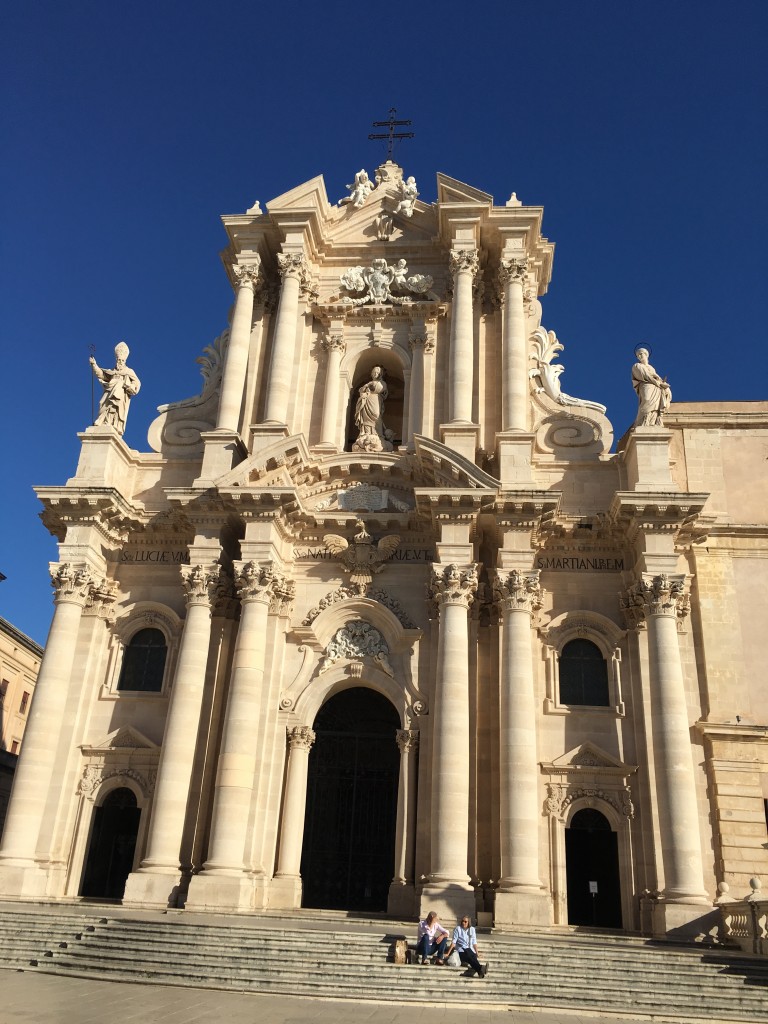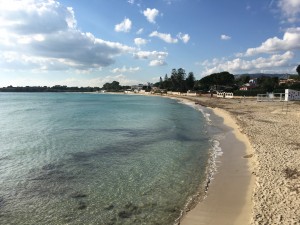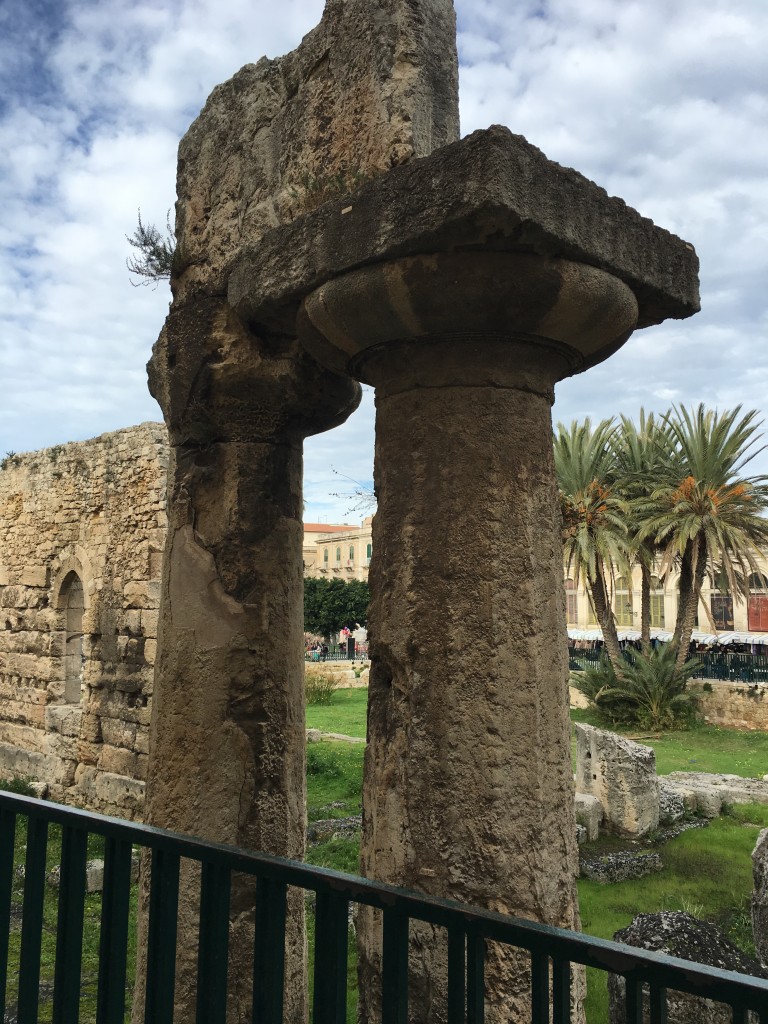While sitting having breakfast at the delightful Movimento Centrale Coffee shop on the island of Ortigia, Syracusa, we discovered Jeremy Dummett’s paperback version of “Syracuse City of Legends – A glory of Sicily”. It seemed an ideal companion to our extended stay in Siracusa. Just as Dummett notes when referring to the comments of late 19th Century Englishmen, Douglas Sladen, “it is a place where you can spend any space of time”.
The book is written in two parts. The first, takes the reader through the rich history of Syracuse right upto today. The second, describes the principal monuments of Siracusa. As a result it is both a history of this quite amazing place and a form of guidebook, although to call the second section a guidebook does quite an injustice.
I read the book in sequence, first the history and then the monuments, however each section is discrete which means if you are visiting, looking at the second section first would also work well. In fact, that’s what I will be doing with Jeremy Dummett’s recently published book on Palermo where will be in a week or so.
While Sicily fascinates me I am not a student of the classics and as a result have only a passing knowledge of Sicily’s rich history. Jeremy Dummett’s book provides a rich and easy to read account of the incredible history of Siracusa and with it so much of the history of Sicily itself. He provides insights into Siracusa’s wealth built and plundered on a number of occasions, as well as stories of tyrants and rulers, it’s eventual decline to a secondary city on the island of Sicily and concludes with Siracusa’s place in 21st Century Sicily.
As someone who finds social histories much more interesting than a dry account of events, regular quotes from visitors and writers from the past bring Siracusa’s history to life. References extend far back in history, including the suggestion that Homer’s reference to the small harbour and fresh water spring in The Odeyssy is to the island of Ortigia.
The city’s list of important residents and visitors seems endless. It was fascinating to read about Archimedes, his inventions and senseless death while he was apparently engrossed in resolving a mathematical problem. Siracusa was also visited on more than one occasion by Plato, I particularly enjoyed reading the rather humorous account of Palto’s final exchange with Dionysis. The city has been the scene of two miracles, one in the third century, Santa Lucia and another in the 1950s with the weeping Madonna – both are given attention. Other important visitors include Cicero whose time in Siracusa is referred to in a quite a detailed account of the Roman relationship with Siracusa. St. Paul also visited the town although apparently he did not preach there. The story of Caravaggio and his time here is fascinating, interestingly the painting of Santa Lucia’s has moved since the book was written and is now located in the Church of Santa Lucia alla Badia in the Piazza Duoma. There is a small section devoted to the Napoleonic Wars, as well as more recent events, that includes Siracusa’s strategic relevance during the Second World War and the cities substantial change of character post the War.
The second section deals with monuments of interest, set out in eras rather than geographically making the discussion of each so much more interesting and so much more than a guidebook. As I had a particular interest in Santa Lucia, the section on The Early Christian Era I found of great interest. I also got the answer to why the patron saint of Siracusa, Santa Lucia’s body no longer resides in Siracusa but is located in Venice. The sections on The Greek, Roman, Baroque and the catch all other sections are equally interesting. Certainly the section on the Archaeological Park is very useful, as there is such limited information available available in the guidebooks or with the pamphlet you receive after paying your admission fee.
The book also deals with a challenge that I suspect others have in visiting a place such as Siracusa which is that you find yourself wanting even more information. While the book goes along way to meeting this challenge there are extensive Notes, Further Reading, Bibliography, Chronological Table, Glossary, and an Index that gives considerable further information and makes further research much easier.
As a final thought about Syracuse- City of Legends, I found the account of contemporary Siracusa’s development an easy way to understand something that has perplexed me and I am sure others about not just Siracusa but Sicily itself, which is “How is it that a place with such an amazing cultural heritage evidenced by its ancient Greek and Roman ruins and its baroque architecture has little signage, is often adjacent to a rundown eyesore of a building or a chaotic road?” It couldn’t be put better than in the description of the Roman Gymnasium, which Dummett describes as “(o)ne of the most intriguing sites in Syracuse” yet “receives few visitors as the traffic … makes it an uncomfortable approach for pedestrians and there is no carpark”. Where else would such a piece of cultural heritage get such scant attention?
Syracuse City of Legends – A Glory of Sicily provides a wealth of information about a place that was once the most significant city in the world. It’s an excellent companion to a visit or planning tool for a future visit, for if you haven’t visited at the time of reading you surely will after you have.
Interview with Jeremy Dummett – Sicily inside and out



Thanks for the review of my book. I am glad you enjoyed it as well as the city. It is an extraordinary place which can only increase in popularity.
Thanks for visiting my blog.
Interest in the city will only increase with hooks such as yours.
Pingback: The diary of a Slow Traveller – Walking the streets, Siracusa, Sicily | browney237's Blog